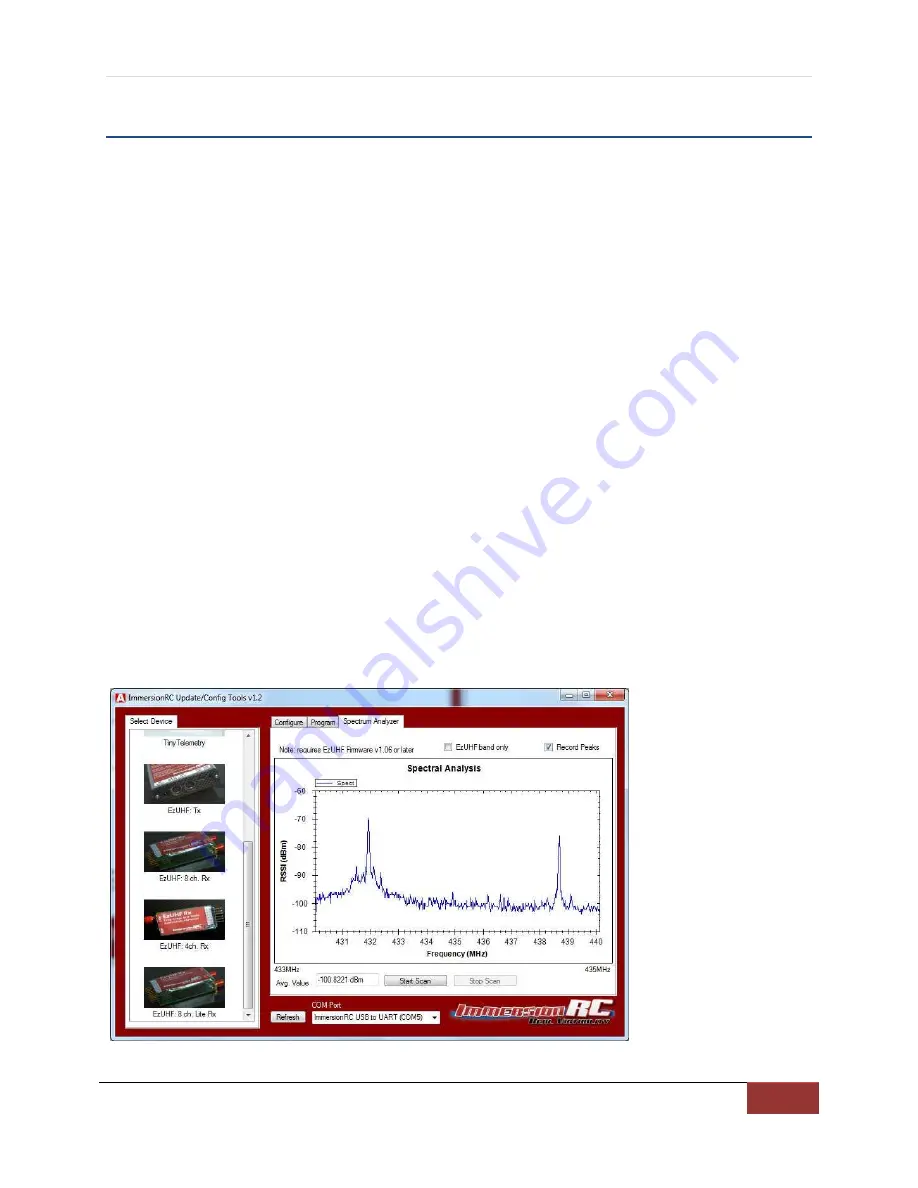
ImmersionRC | EzUHF R/C Control System
18
IMPORTANT: Known Sources of Interference
There are several cameras which have been shown to emit broadband noise which can greatly
limit the range of any UHF R/C system (FHSS or not). The use of these cameras should be
avoided on any plane controlled by a UHF link.
This list will be extended as more cameras are tested.
KT&C ‘VSN505’ a.k.a KX550
Emits broadband noise in the ~310MHz to ~610MHz band
Ground test range reduced to 30% of range without it.
Up to date information on other cameras can also be found by googling the name of the camera
along wi
th the keyword ‘UHF’.
Note that the popular GoPro cameras do have a relatively powerful noise emission at around
432MHz. These don’t seem to affect the EzUHF much in practice, but it is a good idea to
separate the GoPro from the UHF Rx/Antenna as much as possible.
As a rule of thumb, if the RSSIs for an EzUHF system look good (-60, -80dBm range), and the
link quality indicator is often dipping below 100%, suspect an interfering source on the plane.
Cameras (SD and HD), and poorly designed switching power supplies (especially 5v->12v step-
ups) should be the first thing to look at.
To assist in debugging RF interference problems, the ImmersionRC tools, v1.12 or greater,
along with a version of the EzUHF Rx firmware v1.14 or greater, can replace a spectrum
analyzer worth thousands of dollars. The plot below shows a GoPro HD camera radiating
around 432MHz (the EzUHF, in its standard configuration, occupies the 433 -> 435MHz band,
so the GoPro in this cas
e doesn’t affect range much).




































